Gallery of Separation Results |
Here, we show several examples of our separation results. In each case, we mention the separation method we have used. In all cases, the scene image is the sum of the computed direct and global images. However, to bring out the details, for some of the scenes we have brightened the direct and global images by a scale factor (between 1 and 2) with respect to the scene image. By clicking on each of the thumbnail images shown below, you can see the corresponding high resolution image.
(Back to Main Project Page) |
| Eggs on a plate |
Method : Checkerboard
|
|
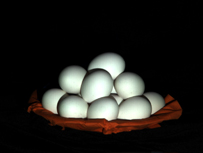 .
Scene
.
Scene |
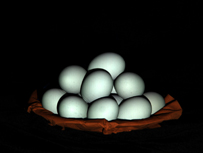 .
Direct
.
Direct |
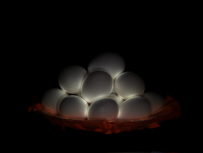 .
Global
.
Global |
| In this scene of eggs on a plate, the strong interreflections between the eggs and between the eggs and the paper are captured in the global image. The direct image shows the diffuse shading over the eggs and the sharp shadows cast by the eggs onto each other. The orange paper can be seen to glow in the global image due to diffusion of light through the paper. |
| |
|
|
| Pink Carnation |
Method : Checkerboard
|
|
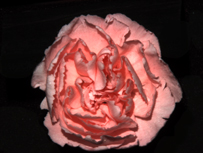 .
Scene
.
Scene |
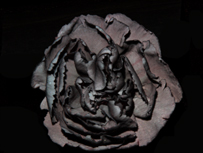 .
Direct
.
Direct |
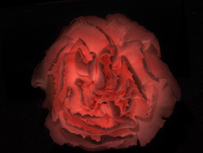 .
Global
.
Global |
| In the case of this flower, we see that in the direct image the shadows cast by the petals on each other are strong and the petals themselves appear grayish and somewhat listless. As a result, the direct image looks more like that of a synthetic flower than a natural one. It is interesting to note that most of the color of the flower arises from global effects. These include the interreflection of light between the petals as well as the diffusion of light through the petals. Both these effects cause a "sharpening" of the spectral distribution of the light. Due to this sharpening, the color of the light gets more reddish after each bounce or diffusion. |
| |
|
|
| Peppers |
Method : Checkerboard
|
|
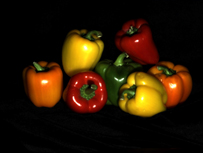 .
Scene
.
Scene |
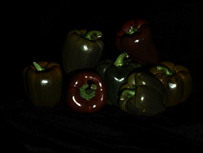 .
Direct
.
Direct |
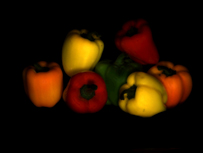 .
Global
.
Global |
| These peppers exhibit very strong subsurface scattering. As a result, the colors of the peppers are almost entirely captured in the global image. The direct component mainly includes specular reflections, except in the case of the green stalks that are rather more diffuse reflectors. |
| |
|
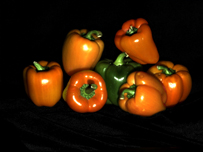 |
Novel Images: This video shows novel images generated by changing the hues of the peppers in the global image and adding it back to the direct image.
MPEG , Quicktime |
|
|
| Grapes and Cheese |
Method : Checkerboard
|
|
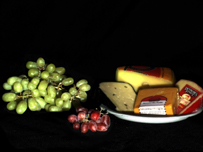 .
Scene
.
Scene |
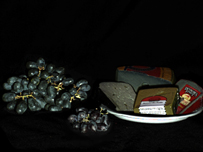 .
Direct
.
Direct |
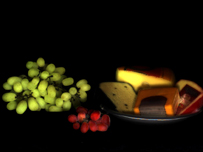 .
Global
.
Global |
| Similar to peppers, the colors of the grapes are mostly due to global illumination by subsurface scattering. The direct components for both sets of grapes are similar and include both specular and diffuse reflections from the surface. The cheeses in the scene also produce strong subsurface effects. The direct image also captures the specular and diffuse reflections from the plastic sheet wrapped around the cheeses. The plastic wrapper is also ‘back’ illuminated by the cheeses, an effect captured by the global image. |
| |
|
|
Novel Images: These images were generated by changing the hues of the grapes in the global image and adding it back to the direct image. |
|
|
| Bread |
Method : Checkerboard
|
|
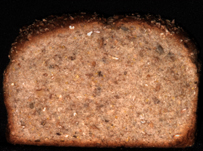 .
Scene
.
Scene |
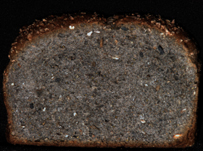 .
Direct
.
Direct |
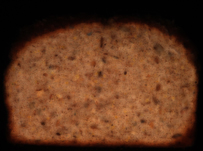 .
Global
.
Global |
| Due to the spongy nature of the bread, most of the light passes through the surface and scatters beneath it to produce strong and complex global effects. The direct image shows the 3D texture of the bread surface as well as the albedo variations at the crust of bread and grains in the bread. |
| |
|
|
| Tea Rose Leaf |
Method : Checkerboard
|
|
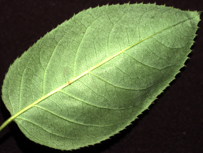 .
Scene
.
Scene |
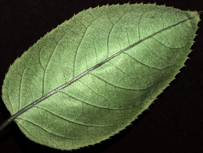 .
Direct
.
Direct |
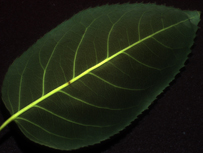 .
Global
.
Global |
| Although this leaf is thin, it exhibits a noticeable global component over its entire area. This is because the entire leaf has a spongy mesophyll layer, beneath the upper epidermis and palisade mesophyll layers, that are slightly translucent. The global component is particularly strong for the veins of the leaf. This is because the veins are even more translucent as they are made of vascular tissues that carry water, minerals and sap. |
| |
|
|
| |





















